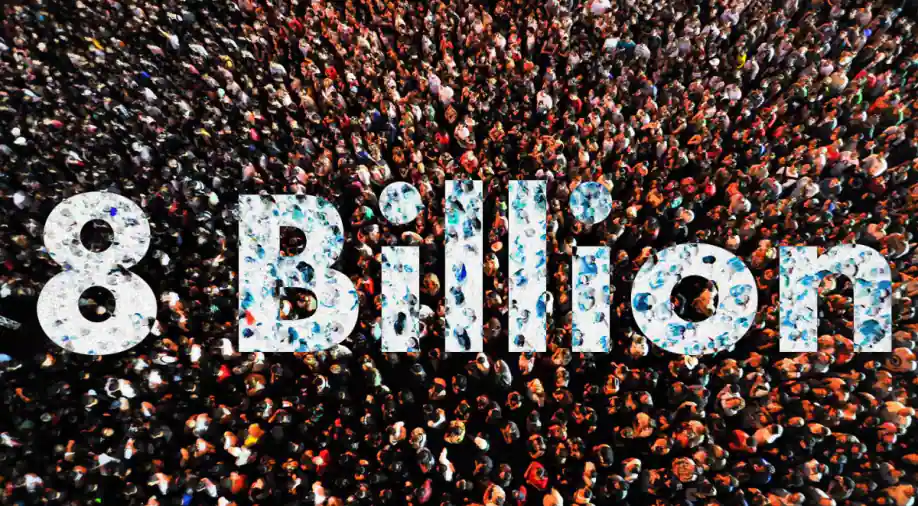Highlights
- 8 billion people now reside on this planet, according to UN estimates.
- In the coming year, India is predicted to overtake China as the world’s most populous nation.

According to a report by the United Nations, the world today has a population of 8 billion people. They consider this expansion to be a landmark in human history, stating, “ This unprecedented growth is due to the gradual increase in human lifespan owing to improvements in public health, nutrition, personal hygiene, and medicine. It is also the result of high and persistent levels of fertility in some countries.”
India is on track to surpass China as the world’s most populous nation in 2024, according to the UN’s World Population Prospects 2022 report. Only eight countries are predicted to produce the next billion people which are Congo, Egypt, Ethiopia, India, Nigeria, Pakistan, Philippines, and Tanzania.
Despite a large increase in the latter half of the 20th century, the UN also noted that population growth is slowing down. The world population grew from 7 to 8 billion people in 12 years, and it will take another 15 years to reach 9 billion people, showing that the rate of population expansion is decelerating. The most recent forecasts from the UN show that population growth has been decreasing since 1950 and has dropped below 1% in 2020. Around 8.5 billion people could live on the planet in 2030, and 9.7 billion in 2050. The population is predicted to peak at 10.4 billion people in the 2080s and stay there until 2100.
Upon reaching 8 billion, can this milestone be viewed as an achievement?
This milestone should undoubtedly be regarded as an achievement because it was made possible by the expansion of science, technology, and human development in all spheres of life. In 2019, the average life expectancy at birth was 72.8 years, an increase of about 9 years since 1990. It is anticipated that further mortality declines will lead to an average worldwide lifetime of roughly 77.2 years in 2050.
The 8 billion milestones were celebrated by the UN as “a testimony to humanity’s achievements,” but with a warning. The UN Under-Secretary-General for Economic and Social Affairs, Liu Zhenmin, asserts that a large population makes it more challenging to eradicate social issues like poverty, malnutrition, and hunger as well as expand access to health and educational systems. This might also refer to the massive population’s use of limited resources. As the resources in the earth’s environment are depleting, there may not be enough to meet peoples’ needs.
Some of the world’s poorer nations, including those in sub-Saharan Africa, are where most of the world’s population growth is concentrated. This evidently proves that contrary to the popular belief that a higher population means higher per capita income, countries with the highest per capita and greenhouse gas emissions tend to be those with the highest per capita income rather than those with a higher population.

Where does India stand?
As per the United Nations’ World Population Prospects (WPP), India will surpass China as the world’s most populated nation in 2024. For now, China remains the most populated country in the world with 1,426 million people – and India is only slightly behind with 1,412 million representing 19 and 18 percent of the world’s population, respectively.
However, this does not necessarily mean that a crisis will arise. The experts claim that India is at a sweet spot with a very healthy working-age population and a lower senior population, which might be very beneficial for the economy similar to what has been happening in China for the past 20 years. This might contribute to a faster rate of economic growth.
Read more: Shraddha Walker’s Love turned into a brutal murder!













